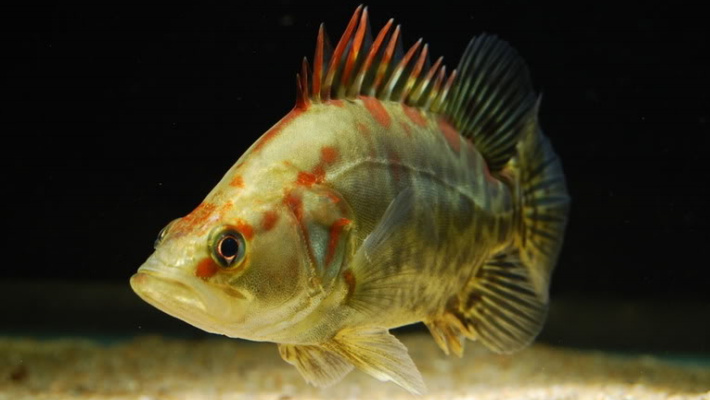|
As reported
in the previous posts, common perch, Perca
fluviatilis, do not respond to sounds of the rattling wobblers and glass
rattles. In this post, we will show that common zander, Stizostedion lucioperca, ignore sounds of the Ringing Bell System
used (or has been used) in the Mepps spinners. Zander are
selected for experiments because these fish, like perch, have the well
developed acoustically guided behaviour (Protasov, 1965).
The Mepps
Ringing Bell brass system consists of an internal core and an external bell-shaped
weight. This system has been mainly used in the Mepps Comet spinners (now these lures are absent in the catalogs) instead of
typical cylindrical weights. Mepps Co. writes
that sounds produced by the rotating blade and ringing bell attract… "the most
hesitant fish”.
According
to our field experiments, this marketing course is incorrect.
In these experiments,
ringing and ringless 7 gr Mepps Comet Booster spinners of silver color were
compared with each other. One half of lures, marked CBR, were intact. In the
other half of lures, marked CBL, internal cores and external bells were glued with the waterproof
adhesive.
Lures
were tested (near the village Nedanchychi, the middle part of Dniepro river, in
June) in the shallows,
where zander preyed on small fish (mainly river
bleak, Alburnus alburnus) from the
evening twilight to deep night.

Figure 1. Juvenile zander, Stizostedion lucioperca
At each
estimated locality of zander, 12 presentations (cast and retrieving) of lures
were made: 3 with CBR, 3 with CBL, 3 with CBR and 3 with CBL. After the 10-15 min rest, this
procedure was repeated in the reverse order. In total, 27 zander were landed for three nights:
12 on CBR and 15 on CBL lures. To estimate mean differences for field data,
fish were group per each 6 lure (for CBR and CBL) presentations. In final,
zander, according to Student’s t-test, showed no reliable preference in favor of
ringing (CBR) or ringless (CBL) Mepps Comet Booster spinners.
Because zander,
like other fish, accustom to the repeatedly presenting artificial lures
(stimuli) along with the decreasing of their attractiveness (Lescheva & Zhuykov, 1989), three different
localities of zander have been used.
There are
several reasons that allow to explain why zander ignore sounds of the Meeps Ringing
Bell System. For more information, please see the posts mentioned above.
Cast your
attention that audiograms of the Mepps spinners, with the cylindrical or
hexahedral bodies, is mainly represented by the powerful rhythmic sounds
produced by rotating blades (click here to hear sounds). These rhythmic sounds, with the
frequency that is equal to the frequency of blade rotation, overpower any other
thythmic and noise sounds of the Mepps (and similar) spinners.
Basic
References
Lescheva
T.S., Zhuykov A.Y. 1989. The learning in fishes. Ecological and applied aspects. Moscow, Science
Protasov
V.R. 1965. The bioacoustics of fishes. Moscow,
Science
| 







 SUBSCRIBE
SUBSCRIBE



